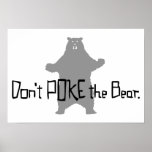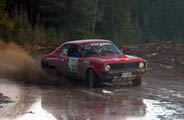WRC Deaths
Posted by darkknight9
Pete Pete Remner Mod Moderator Location: Cleveland, Ohio Join Date: 01/11/2006 Age: Midlife Crisis Posts: 2,022 |
Dunno about harnesses, but regular seatbelts will stretch quite a lot.
I didn't bother to measure when I was in the frontal/sideswipe that removed the front of the car I was riding in, but I nearly hit the dash. And I'm tall and sit pretty far back. The seatbelt was stiff where it'd stretched and fused the fibers to themselves. There's your anecdote without being hard data... Pete Remner Cleveland, Ohio 1984 RX-7 (rallycross thing) 1978 Silence is golden, but duct tape is silver. |
Morison Banned Ultra Moderator Location: Calgary, AB Join Date: 03/27/2009 Age: Ancient Posts: 1,798 Rally Car: (ex)86 RX-7(built), (ex)2.5RS (bought) |
As in wailing on it with a sledge? First Rally: 2001 Driver (7), Co-Driver (44) Drivers (16) Clerk (10), Official (7), Volunteer (4) Cars Built (1), Engines Built (0) Cages Built (0) Last Updated, January 4, 2015 
|
Which IMO is part the value in such discussions.....someone ususally learns something or adds to their mental framework of understanding. |
mulik52 Klim Verba Senior Moderator Location: San Francisco, CA Join Date: 07/24/2013 Age: Settling Down Posts: 40 Rally Car: Audi 90Q 20V n/a |
I wholeheartedly agree. I think you want the maximum length of the belt which would still prevent you from hitting the steering wheel or anything else that is hard. Therefore for each seating set up it would be different. A reasonable load would probably be 3500 lb, as that is the required strength of the anchors. So, if we would have the stress-strain plot of a particular belt, belt's cross-section and the distance between a persons head and the steering wheel, we should be able to calculate the optimal length of the belt. Klim |
mulik52 Klim Verba Senior Moderator Location: San Francisco, CA Join Date: 07/24/2013 Age: Settling Down Posts: 40 Rally Car: Audi 90Q 20V n/a |
The climbing rope plot is a great idea, here is the first link of google search. Quite different from the metal chain, its curious to see that there is no plastic zone, all elastic till the breaking strength:
http://theeyegame.com/speleo/Pubs/rlenergy/Default.htm Klim Edited 2 time(s). Last edit at 09/29/2013 12:01PM by mulik52. |
|
And this site is kinda scary......look at the close up webbing photos.....no Chinese stuff!!
http://www.dhgate.com/wholesale/racing+safety+harness.html |
Josh Wimpey Josh Wimpey Mod Moderator Location: VA Join Date: 12/27/2006 Age: Midlife Crisis Posts: 649 Rally Car: Sneak the Golf |
The only numbers I have found for harnesses have no documentation but are as follows With 2500lb load Nylon 20-30% elongation Polyester 5-15% elongation ____________________________________________________________- One. Class -- 2WD www.quantumrallysport.com http://www.facebook.com/home.php?#/pages/Quantum-Rally-Sport/281129179600?ref=nf |
|
Since 2 curves join together at the max stress/strain point, then I'll venture to say that the upper/left plot is for the elongation phase, and the lower/right is for the relaxation phase after max elongation is reached. The integral of the space between the curves is the work done (energy absorbed). Yes, I can read an engineering book....
Edited 1 time(s). Last edit at 09/29/2013 05:27PM by starion887. |
Looks like the numbers I found...probably the same place. I have no reason to assume it is not correct. |
Wow. That makes sense to me, but implies that the first part of the stretch on the way up is non-elastic. Or is it just a coinky-dink that the plot ends directly beneath the "knee" on the way up? |
It's probably elastic, but just at a different rate. I have a hard time understanding exactly what is going on with belts because so many things can be going on that don't happen with a metal for instance. A metal is pretty much uniform all through and the elastic phase is uniform throughout and a single 'thing' is changing. A fabric can have a lot of differing things going on that I can imagine, like the threads moving and shifting across one another that allows elongation of one type, and then that action slowing or stopping while the individual threads stretch in length, and then other perhpas different internal movements; all the while the and stress/strain rates change.
I am not sure that you can tell from this curve if any phase here is non-elastic (plastic). The lower left end of the lower curve is almost back at the origin. If the elongation is plastic (at least in the sense of the word for belts), then the total curve will not return to the origin; i.e., the strain will be non-zero with zero stress and stay that way...i.e. the material stretched permanently. Oh yes, I think it is just a coincidence about the end point being under the knee. Some materials will not fully return immediately to their original length after stretching but will slowly 'relax' back to the original length after a while. I would not be surprised if that was going on some here. Look at the very last bit of the lower curve where the stress is zero but the strain is decreasing along the X axis: the belt is 'relaxing' with no load on it at that point. And the more I think about it, maybe it is not a coincidence....If the belt is completely and terminally relaxed at the lower left end of the lower curve, then it may be significant that what would be the 'residual strain' distance from the origin is about the same at the strain distance covered by the first steep part of the curve. I.e., the first part of the belt stretch may indeed be 'non-elastic' in that phase. But I am not sure there is any way to tell from this. Such mysteries..... 
More thoughts....at least in metals, the point at which the curve is non-elastic is where it inflects downward...which would be right at the knee. Haven't thought that one out...just throwing it out there. Edited 4 time(s). Last edit at 09/29/2013 06:55PM by starion887. |
Yeah, as we continue, I'm getting more confused and unsure. According to my old notes, there are two very different ways to measure belts. One is the classic stress/strain, where the device has effectively infinite ability to produce tension and "walks" one end back in steps of .001% of original length, measuring the tension transmitted to the other end. The other pulls one end to a certain level of tension and measures the total length. The former seems to produce plots like the one I posted above, but the latter produces plots with two straight zones before the curve to final breakage. I can accept that the two methods produce different plots, but I can't wrap my head around the relationship between the two.
|
heymagic Banned Mod Moderator Location: La la land Join Date: 01/25/2006 Age: Fossilized Posts: 3,740 Rally Car: Not a Volvo |
Material Width(in.)BreakingLoad(lbs.)Elongation(%)Load@ElongationMeasurement(lbs.) Spec
Nylon , ------ 3.0" --- 10,101 --- 13.2 --- 2,500 --- both Polyester, --- 3.0" --- 10,656 ---- 8.46 --- 2,500 ---both Nylon, ------ 2.0" ----- 6,375 --- 13.35 --- 1,500 ---16.1 Polyester, --- 2.0" ----- 7,079 ---- 7.5 ----- 1,500 ---16.1 Nylon, ------ 1.75" ----- 6,587 --- 18.05 --- 2,500 ---16.5 Polyester, --- 1.75" ----- 6,921 --- 15 ------ 2,500 ----16.5 From the company who never tests...  This is a summary of the last couple years testing belts. I have about 4 pages of specifics (without names) in a pdf I can send. Looks like nylon stretchs about twice what poly does. In a dead straight pull the hardware usually fails before the webbing. In any angular pull, like real life sometimes sees, the material experiences rapid breaking of the fibers one at a time known as dumping. The webbing fails before the hardware. This is why we harp on keeping belts straight and not being redirected. I also think (myself) that maybe we should install the mounting hardware on a shouldered bolt so it can pivot to increase the possibility of a straight load. This is a summary of the last couple years testing belts. I have about 4 pages of specifics (without names) in a pdf I can send. Looks like nylon stretchs about twice what poly does. In a dead straight pull the hardware usually fails before the webbing. In any angular pull, like real life sometimes sees, the material experiences rapid breaking of the fibers one at a time known as dumping. The webbing fails before the hardware. This is why we harp on keeping belts straight and not being redirected. I also think (myself) that maybe we should install the mounting hardware on a shouldered bolt so it can pivot to increase the possibility of a straight load.
|
Sorry, only registered users may post in this forum.
Rally Anarchy © 2014 Corvus Digital –
Part of the AutoShrine Network –
Problems? Send an email to the Webmaster






